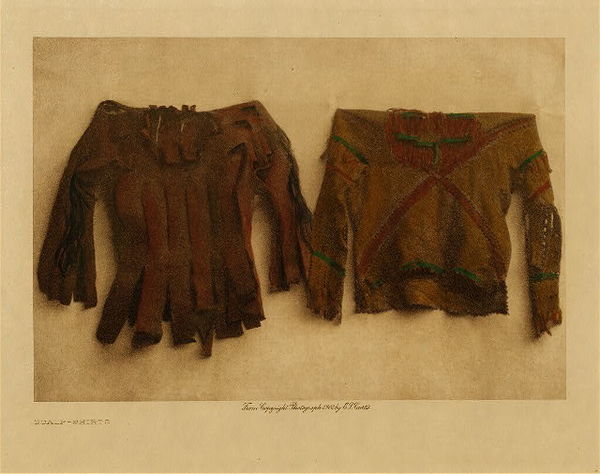Edward S. Curtis (1868-1952)
View Artist Biography
Title:
*50% OFF OPPORTUNITY* Scalp-Shirts
Date:
1908
Size:
Volume, 9.5 x 12.5 inches
Medium:
Vintage Photogravure
"The important article of dress for those who has won the necessary honors to warrant them in wearing it was the scalp- or honor shirt- a coat-like garment fringed at the bottom as well as along the side-seams and sleeves, and slipped on over the head. In making the scalp-shirt two deerskins of medium size were placed together face to face, sewn at the shoulders, and tied at the sides. The sleeves were sewn firmly at the shoulders and left open along the under side of the arms. The garment was ornamented with beadwork on body and sleeves, and, according to the owner's deeds of valor, with tufts of human hair, weasel-skins, and feathers, each component part of this decoration telling its own story of the wearer's prowess. When taking a scalp, a warrior often removed almost the entire head-covering of the enemy; this was divided into many small pieces for use on the scalp-shirts. The hair of white people was not used for this purpose, as the taking of their scalps was not considered an honor" by Edward S. Curtis in "The North American Indian", Volume III
This image was taken by Edward Curtis in 1908 and handpainted.
Provenance:
Art Institute of Chicago, Ryerson & Burnham Library
This image was taken by Edward Curtis in 1908 and handpainted.
Provenance:
Art Institute of Chicago, Ryerson & Burnham Library
